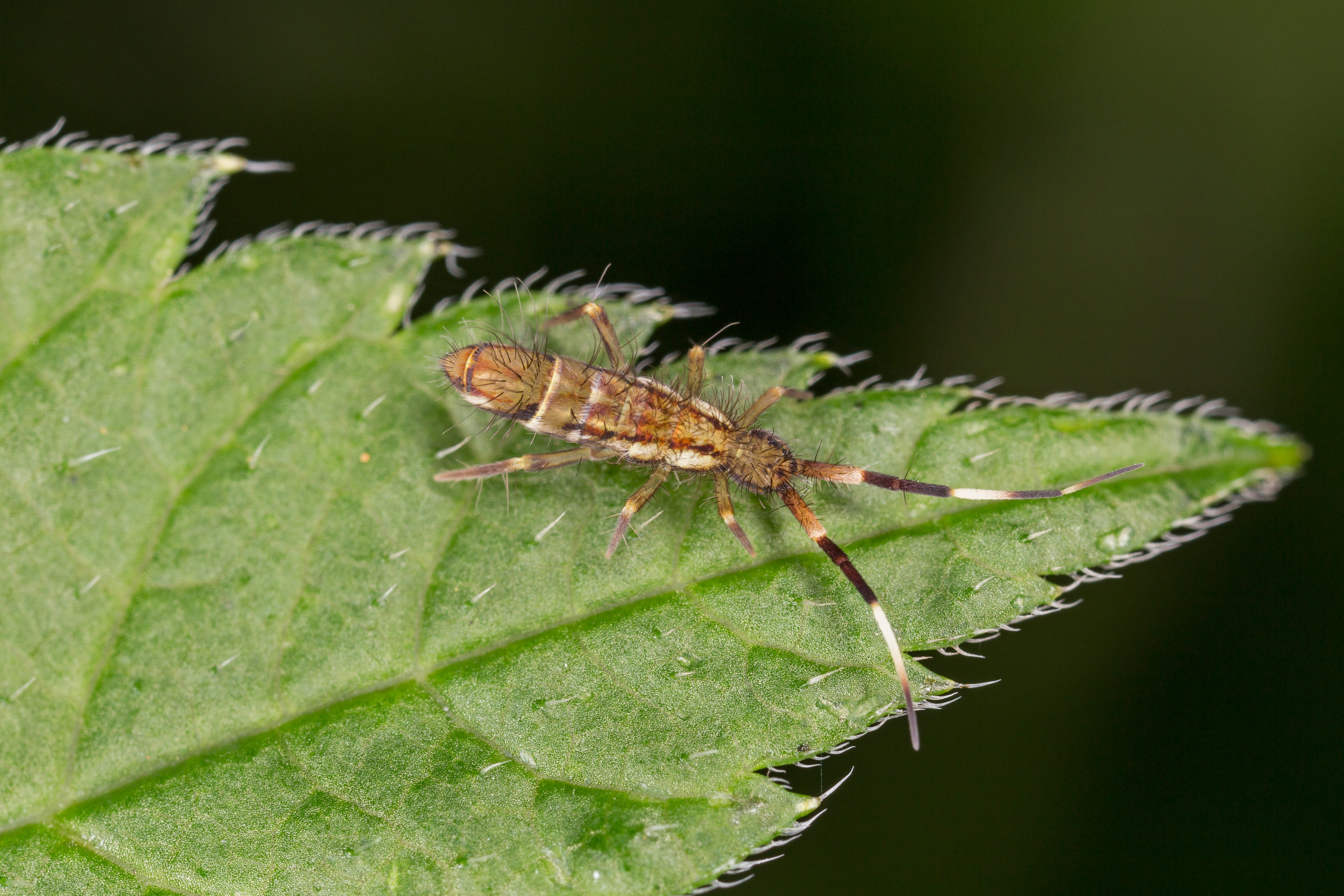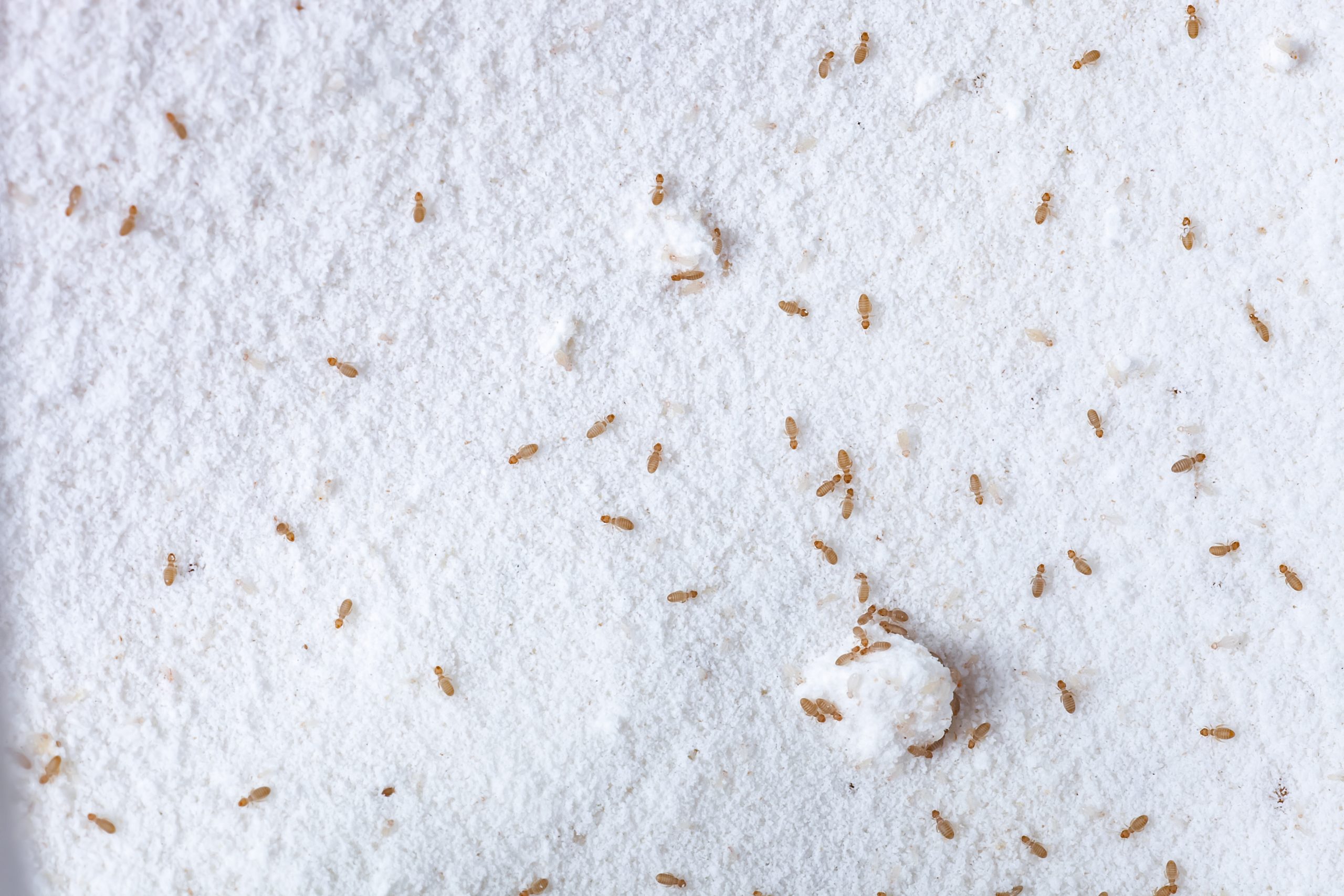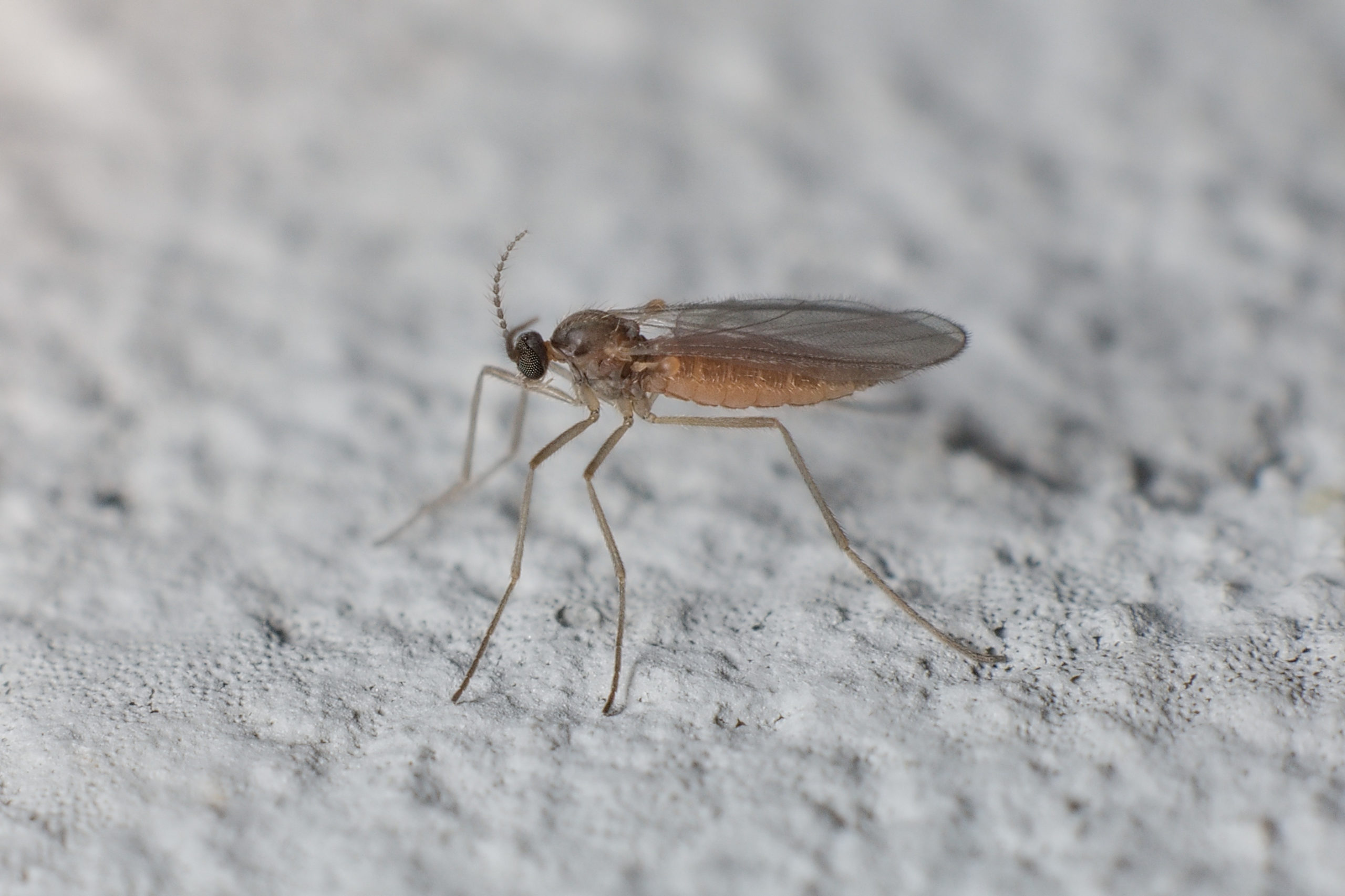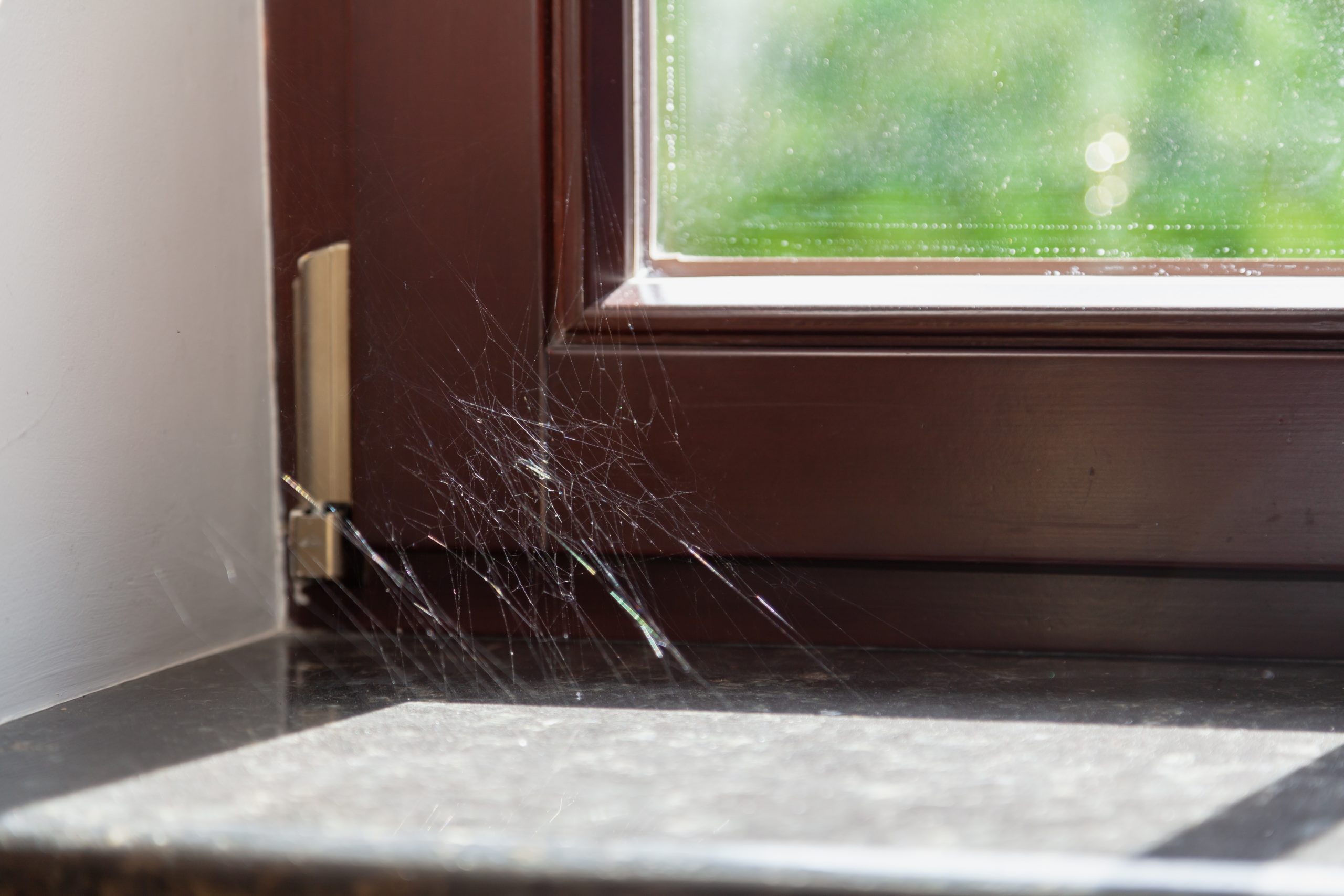6 Pests Often Found On the Windowsill
6 Pests Often Found On the Windowsill
The windowsill is often overlooked as an important part of not just the window, but also the home itself. The shelf-like structure below a window is perfect for housing small plant friends, matchbox cars on an imaginary track, and children’s elbows as they stare out at the big, wide world. Besides these functions, the only time we really notice the windowsill is when it also houses some uninvited guests. There’s nothing like realizing that the specks of dirt are moving and causing your windowsill to be slowly covered in the tiniest pests you’ve ever seen.
Tiny pests won’t always go away on their own, so the sight of multiple little insects on your windowsill is not a one-time experience. The good news is that mites of some kind are often the pests at hand, and they are harmless to us. Destructive to the home and plants, sure, but non-venomous and avoidant of humans. The main draws for windowsill pests include shelter, light, food, and surrounding plants. While any common insect could be found on a windowsill in reality, let’s take a look at the six most frequent windowsill-visitors and why they find this under-appreciated surface fascinating.
Clover Mites

This is the most common culprit of invading windowsills across the U.S. Even if you have never seen them on a windowsill, you have likely seen clover mites crawling on the sidewalk near any kind of vegetation. They are tiny, about .75 mm as adults, and look like black dots at first but are actually red. The easiest way to tell if clover mites are your problem is to look as closely as possible. They have longer front legs that distinguish them from other microscopic pests. They mainly come inside in the fall, when temperatures drop and plants begin to die. Clover mites only eat plants, so it may seem strange that they flock to a flat surface that doesn’t necessarily have any plants in sight. There are a couple of reasons why they could be found on a windowsill. One is that they want to avoid any adverse weather, both too hot and too cold, and they can fit through the tiniest of cracks around a window in order to protect themselves. Another is that, unfortunately, they can do a lot in these cracks and crevices that will result in them invading a nearby windowsill. Clover mites like to molt and lay their eggs in crevices for maximum protection, and these eggs can overwinter to hatch bright and early in the spring. The good news is that they can’t reproduce indoors, as most of their life is preferred to be lived outside in the grass and greenery. The bad news is that clover mites can trigger allergies in residents of the home who already struggle with those in the warmer months. Their skin is the main reason for this, as well as their excrement.
Treatment: Although these pests are small and harmless enough to squish without any risk to you, we suggest staying away from that method. Clover mites leave behind red marks when they’re squashed, which means more cleanup for you with your windowsill. Instead, try vacuuming the mites off the windowsill and immediately emptying the vacuum outside in a bag or in your yard far from the house. A preventative option is to keep all plants trimmed back from the house, which is a good idea anyway, and maybe putting a natural barrier around the home. This can be gravel, larger rocks, or bricks. Clover mites can’t cross a border like this due to their small size and limited capabilities, so it will keep them from choosing your house over the outdoors. Lawn-safe insecticide is always an option as well; just be sure to read the directions and only use as instructed.
Carpet Beetles

This seems like a strange move for these so-called “carpet” beetles, but it’s true that they can be found on windowsills at times. These small brown pests don’t actively seek out the windowsill to hang out on, since their favorite spot is – you guessed it – the carpet. But they are drawn to the UV light that comes through the windows, despite their tendency to stay in the dark as much as possible. They are strong fliers and can get up to a windowsill without much trouble, which answers the question of how on Earth they get from the ground up to the window. Carpet beetles eat all kinds of natural fibers, including carpet, wool, and leather, so they can also be found in the closet amidst all of the clothes. The larvae is actually the stage that causes the most damage to our belongings, despite the scary appearance of the grown beetle. The windowsill could also just be the stopping point for the beetles before they make their way down to their beloved carpet and new home, hidden from the watchful eyes of the homeowners and any pets.
Treatment: Honestly, the easiest way to prevent and get rid of carpet beetles is to vacuum the carpets and rugs on a regular basis. This is their main draw, after all, so a consistent vacuum will be sure to rid the flooring of any unwanted guests. Another great way to get rid of carpet beetles is steaming the carpet, either yourself or with a professional company. This obviously doesn’t have to happen all the time, but a good steaming once in a while will keep your carpets clean and beetle-free. If you find carpet beetles in your closet, washing the clothes in hot water should do the trick. And as for the windowsill, the vacuum will be your best friend, provided you empty it out afterwards. You could technically squish them yourself, but that leaves more of a mess and a larger risk of the beetles escaping first.
Springtails

Springtails get their name from an interesting ability they have that often isn’t known about until they actually put it to use. These insect-like organisms have a furcula, a forked appendage below their abdomen, that they can use to propel themselves far away from any predators. While they are harmless to humans and pets, they can actually serve as a warning for damage to the home. Springtails are attracted to organic decay, like wet lawns and leaf litter outside, so they really only flock to this area. This means that if you find some springtails on your windowsill, it could be a sign of water damage somewhere in the area. If the springtails seem to favor one spot in the wall or windowsill, they are finding something you may not see at first. If you have had a storm recently and start seeing springtails inside, it could be worth looking into further. If nothing else, at least you might find a reason for the springtails’ sudden appearance.
Treatment: With all of that in mind, the best way to prevent springtails from invading your windowsill is to keep the humidity and moisture level low in the home. There are de-humidifiers available for purchase from many big box stores if your house is naturally more humid. Also, make sure to get any water damage fixed as soon as possible. Springtails are not the only pests attracted to moisture in the house, so this will prevent other pests from finding your home more interesting than the outdoors. Plus, the sooner you find and fix water damage, the more money and time you can save in the long run.
Booklice

Booklice have the same confusion as carpet beetles; if they’re called booklice, why would they be anywhere other than a book? The answer is that they don’t just enjoy living on and eating book pages. Booklice, also called psocids, eat all kinds of mold and fungi. This means they are also big fans of condensation and moisture that can be found in and near windows. They also love humidity, which means they could be competing with springtails if the windowsill area is enticing enough. Booklice are gray and live in mold-growing places, which is why they are either found outside in damp areas or inside if there is any kind of water damage. The word “lice” is enough to make anyone nervous, especially if you’ve had unfortunate experiences with head lice, but booklice aren’t actually true lice! They’re just another kind of insect that pesters us in our homes. They can live anywhere from one to three months, depending on the temperature and feeding conditions of the area. They are also harmless to humans, but not to any old books or damp building materials in the house.
Treatment: As with springtails, the easiest way to prevent booklice from invading your home is to check for water damage and get any problems solved as soon as possible. Lowering the humidity in the home is also extremely helpful for preventing these moisture-loving pests, as well as providing you with a more comfortable environment. Keeping the windowsill clean and dry is effective for preventing all kinds of pests away from the area; plus, it leaves you with a clean windowsill that doesn’t have a bunch of insects cluttering it up.
Gnats

Gnats can’t seem to take the hint that we don’t want them around in any circumstance. They are tiny, annoying pests that appear to always be hatching from an unknown location of infinite eggs. This is because they can lay their eggs in different kinds of sites that provide them with security and nutrients, so they really can come from anywhere. The favorite gnat egg-laying spots in houses seem to be soil and old wood. This can be a problem if your windowsills are older and have some crevices in the wood or if your houseplants are near any windows, which they likely are. Gnats want a temperate climate to live in, which is why they prefer our homes rather than the outdoors for the same reason that we do. If you experience a sudden influx of gnats in the spring and summer, you definitely aren’t alone; just about every home has what gnats want: normal temperatures, soil, and food sources.
Treatment: This may feel like a broken record at this point, but that’s because it’s true: cleaning the windowsill will keep the amount of invading pests down to a minimum in that area. If you find gnats just hanging out on your windowsill, the swipe of a wet cloth should do the trick for now. Also, checking for any cracks and crevices in the wood can result in you potentially finding a gnat egg-laying site. Gnats love garbage with organic materials, same as houseflies, so keeping the garbage level down indoors will also help with the pest population. Gnat season is upon us, but that doesn’t mean we have to live with them day after day.
Spiders

Spiders are not only not an insect, they are also found on windowsills for completely different reasons. They eat all kinds of insects, and most common spiders will spin a web to trap their prey in so they can dine-in easily. The corners of a windowsill are perfect for a spider web, and they will likely find lots of success in terms of meals. Spiders can fit through tiny gaps just as well as any insect, which is how they make their way inside so easily. They also like to avoid bad weather, so you may come across more spiders during a heat wave or storm season. While spiders are beneficial in that they are a natural form of pest control, it doesn’t necessarily mean that you want a bunch of spiders hanging around your windowsills just to catch a few tiny bugs.
Treatment: In order to prevent spiders from setting up shop anywhere in your home, you have to get rid of their food source. No excess of insects means no army of spiders. By making sure that you don’t have any insects in your home as spider food, you are also helping yourself by checking for pests in general and keeping them all at bay. Cleaning the windowsill and window track is your best bet for an easy way to keep pests away from the window. Dead insects can still secrete a pheromone that attracts their colony to the area, so it’s good to get rid of them as soon as you can. This is also a good time to check for any spider webs in the areas that you can dust or swipe away. If you’re looking for a natural pest repellent, peppermint essential oil seems to be pretty effective against spiders as well as vinegar and water mixed in a spray bottle.
Pest Control Can Clear Up the Window
While any of these pests can be a nuisance, they don’t have to ruin your day. With a little knowledge and some pest control measures, you can get rid of them for good. Checking for excess moisture in the areas and controlling the amount of fertilizer you use on a nearby lawn will greatly help controlling the amount of pests that come your way. The main way to prevent pests from setting up shop on your windowsill is to keep all landscaping and trees trimmed back from your house. Insects and critters of all kinds use these plants as highways directly to your home, so keeping them away from the actual house will greatly cut down on the amount of pests you see on your window sills. Also, try wiping down the actual windowsill once a week or so if you see pests accumulate. Keeping the area cleaned will prevent any carnivorous pests from coming there to feast. Many natural substances, like potent essential oils and vinegar, are repulsive to pests and can be an eco-friendly way to keep them away.
But if you find that an all-out infestation has occurred around your windows, professional pest control may be your best bet. Our team is trained to look for all of the little hiding spots that pests favor, and will find the source of the problem in order to directly solve the issue. Contact us if you want expert help in maintaining a pest-free home, so you can enjoy raising the blinds and looking through the window anytime you please.
Citations
8 tiny black bugs in houses near windows – One of them can destroy your home. (n.d.). How to Murder Pests. Retrieved May 31, 2022, from https://howtomurderpests.com/tiny-black-bugs-in-houses-near-windows/
Foster, S. (n.d.). What are the tiny bugs on my windowsill? Answer & next steps. School of Bugs. Available at https://schoolofbugs.com/what-are-the-tiny-bugs-on-my-windowsill/ (Accessed on May 31, 2022).
Gibb, T. (n.d.). Small moving specks on the windowsill?. Purdue University. Available at https://turf.purdue.edu/small-moving-specks-on-the-windowsill/ (Accessed on May 31, 2022).
Moore, C. (n.d.). Tiny bugs on window sill – What are they?. HomeCare Zen. Available at https://homecarezen.com/tiny-bugs-on-window-sill/ (Accessed on May 31, 2022).
What are these tiny bugs on my window sill?. (n.d.). Home-EC 101. Retrieved May 31, 2022, from https://home-ec101.com/what-are-these-tiny-bugs-on-my-window-sill/
What is Bug Spray, Really?
What is Bug Spray, Really? What is Bug Spray, Really? Summary: Bug spray is a great tool for preventing pests during outdoor activities, [...]
The Various Personalities of Stinging Pests
The Various Personalities of 5 Stinging Pests The Various Personalities of 5 Stinging Pests Summary: Stinging insects are among the most common summer [...]
8 Creative Ways to Have a Pest-Free Fourth of July
8 Creative Ways to Have a Pest-Free Fourth of July 8 Creative Ways to Have a Pest-Free Fourth of July Summary: The Fourth [...]
A Simple Guide to Preventing Stinging Pests
A Simple Guide to Preventing Stinging Pests A Simple Guide to Preventing Stinging Pests Summary: Stinging insects are more active in warm weather, [...]
These 10 Natural Mosquito Repellents Can Actually Help
These 10 Natural Mosquito Repellents Can Actually Help These 10 Natural Mosquito Repellents Can Actually Help Summary: Natural mosquito repellents are easier to [...]
How to Get Rid of Carpet Beetles
How to Get Rid of Carpet Beetles How to Get Rid of Carpet Beetles Summary: Carpet beetles are sneaky pests that don’t usually [...]

